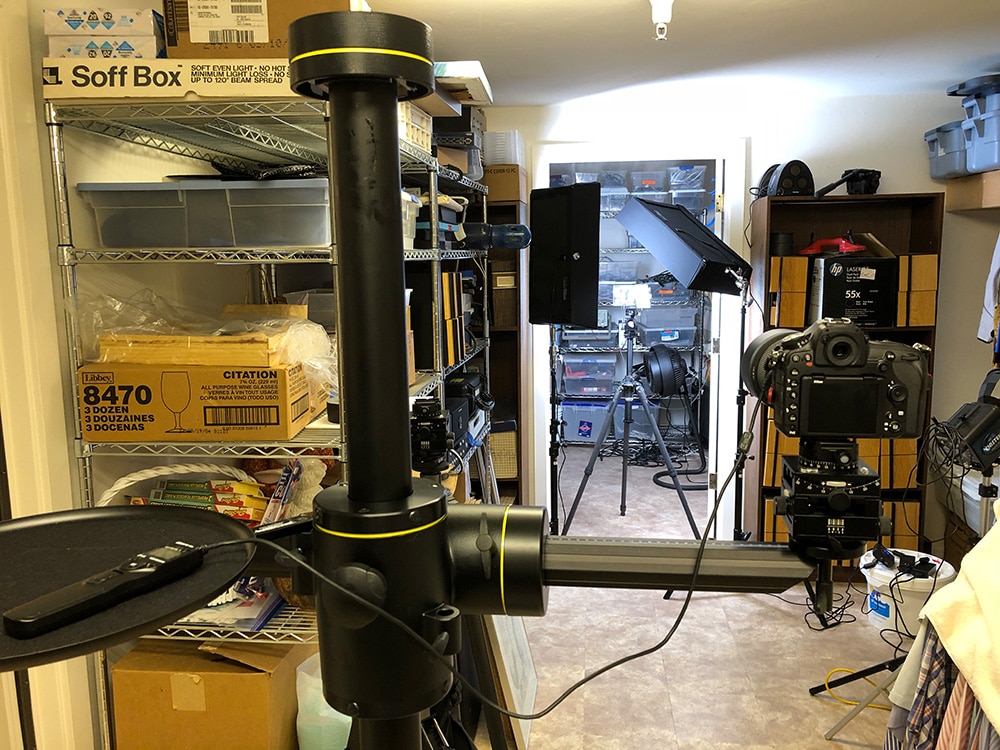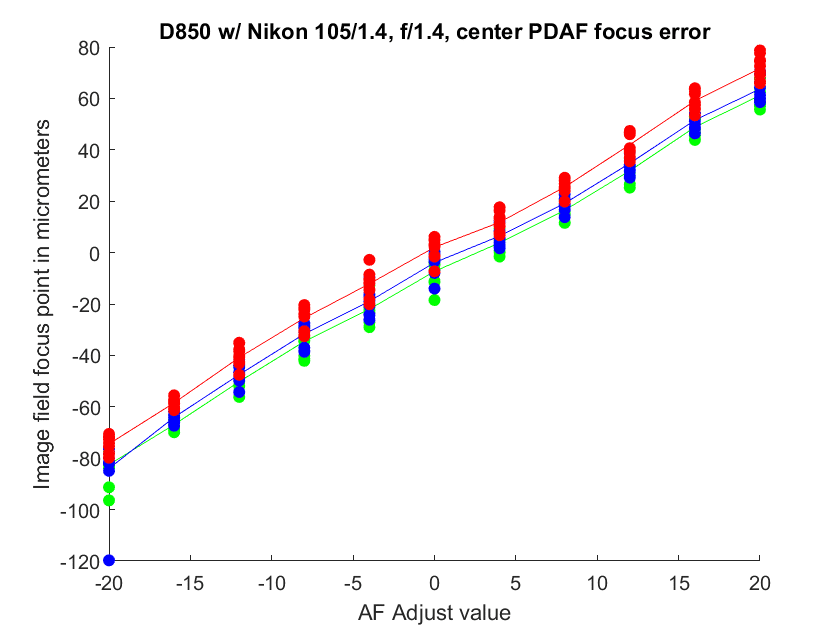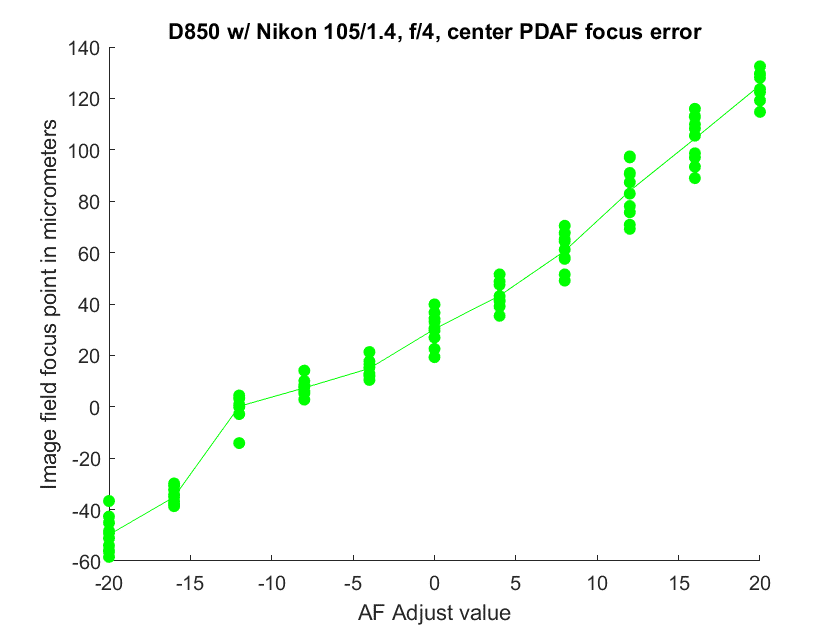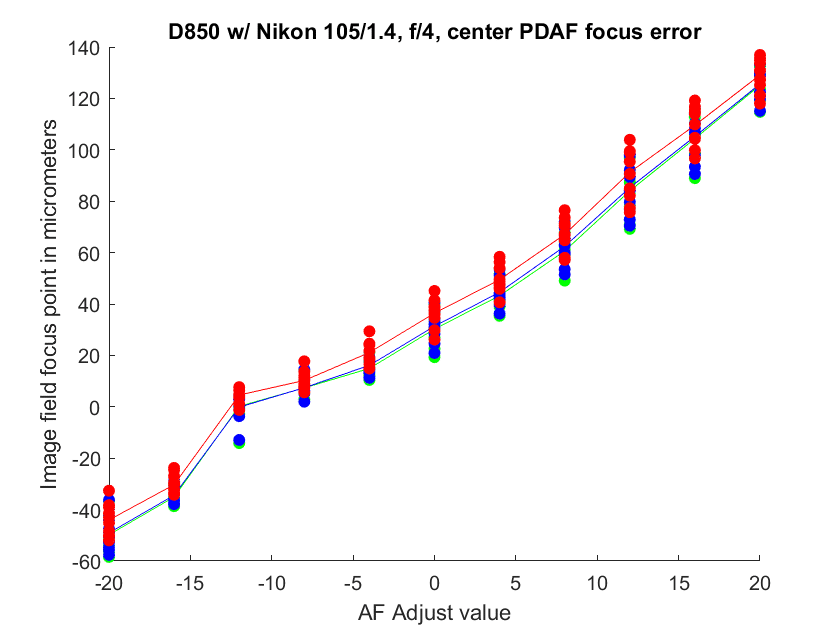This is a continuation of a series of posts on the Nikon D850. The series starts here. You should be able to find all the posts about that camera in the Category List on the right sidebar, below the Articles widget. There’s a drop-down menu there that you can use to get to all the posts in this series; just look for “D850”.
In this post, I developed a strategy for calibrating the Nikon D850 AF Adjustment with the Nikon 105 mm f1/4E lens so that the correction applied by the camera was approximately correct in the face of focus shift with aperture, of which the 105/1.4E has plenty.
In order to quickly dial the corrections implied by the scheme in the previous post to the camera, it would be extremely useful if the camera applied the same amount of image-field physical shift for every increment on the AF Adjust scale, which goes in integer steps from -20 to +20. It would also be useful to know what that increment is in micrometers.
I set up the D850 with the 105/1.4E and aimed it at a LensAlign target:
I made 10 PDAF exposures with the AF Adjust set to each of the following values: -20, -16, -12, -8, -4, 0, 4, 8, 12, 16, and 20. The first set was at f/1.4, and the second at f/4. In each case, I used 32 CDAF exposures for calibration. ISO was 64, shutter speed was 1/1000 for the f/1.4 pictures, and 1/250 for the f/4 ones. I used the Nikon remote that you can see above on the camera stand tray. I defocused with the ring before each of the PDAF shots, each time in the same direction.
The f/1.4 results:
The first graph shows just the Adobe RGB green channel, and the second shows all three. 40 units of AF Adjust produce about 160 um of shift, and the relationship is close to linear. So each unit of AF Adjust produces about 4 um of shift.
Does this change with aperture? That’s what the f/4 test was for.
Maybe there’s a little more shift, but I’m gonna go with 4 um per AF Adjust unit.
Does this change with focal length? Stay tuned.





Looks like you answered the question you posed previously ( the cliff hanger):
Is 10 micrometers (um) of shift a little or a lot?
May be worth linking back/forward to that.
Just to add, I wonder, as I’m sure you do, how reproducible that 4 um is and therefore how much it is adding to the point spread, too many variables you can’t fix I suppose?